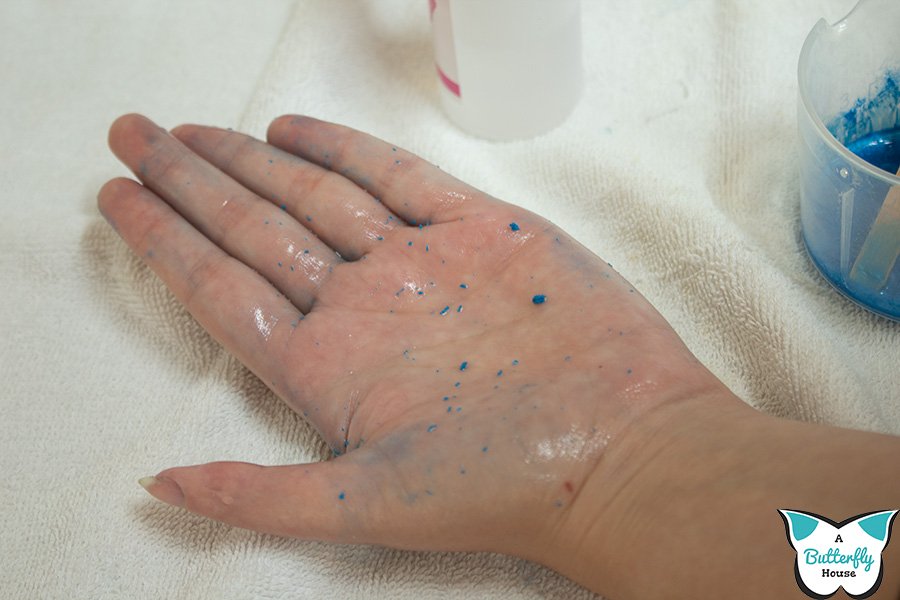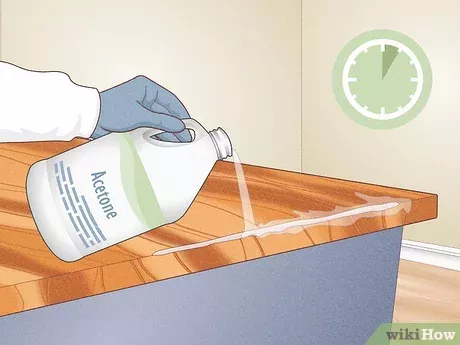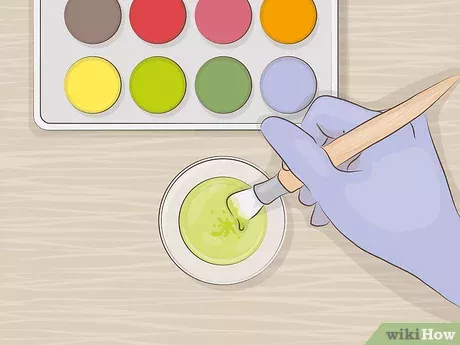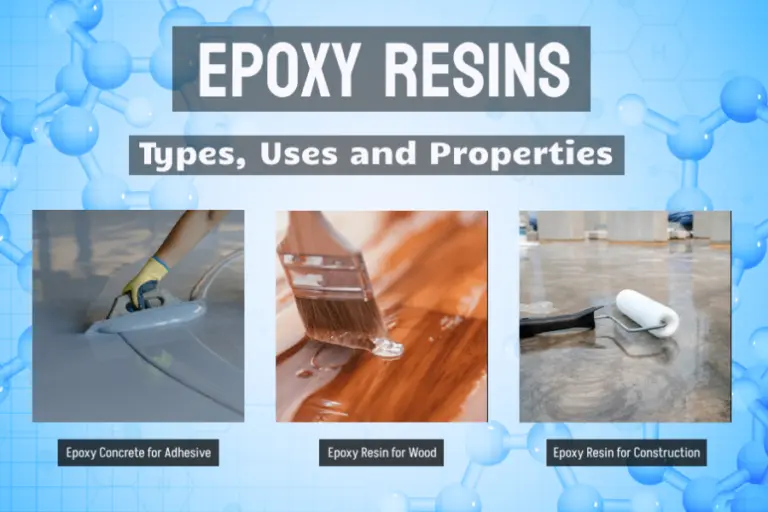How to Get Epoxy Resin Off Hands: Quick Solutions
Removing Epoxy Resin from Skin
Accidentally getting epoxy resin on your hands can be uncomfortable. Here are some effective ways to clean up safely and efficiently.
Safe Methods for Skin Cleanup
When removing epoxy resin from your hands, it’s important to use safe methods to avoid skin absorption of chemicals.
- Soap and Warm Water: This is the first step in getting resin off. Rub your hands thoroughly under warm running water with soap.
- Orange Hand Cleaner: A citrus-based cleaner like Fast Orange or Gojo Natural Orange can effectively remove resin without harmful solvents.
- DIY Scrubs: Using a basic salt or sugar scrub can also be effective. These scrubs provide gentle abrasion to lift the resin off your skin.
Avoid using vinegar or solvent-based cleaners as they will dissolve resin and increase the chances of skin absorption.
Using Orange Hand Cleaner
Orange hand cleaners are specifically formulated to remove tough substances like epoxy resin.
| Brand | Type | Properties |
|---|---|---|
| Fast Orange | Gel | Citrus-based, solvent-free, non-toxic |
| Gojo Natural Orange | Gel | Contains pumice for extra scrubbing power, non-toxic |
Orange hand cleaners break down the resin and wash it away without the risk associated with solvents (UltraClear Epoxy). Here’s how to use it:
- Apply the orange hand cleaner directly to the affected area.
- Rub your hands together, focusing on areas with resin.
- Rinse thoroughly with warm water.
- Repeat if necessary.
DIY Salt Scrub vs Sugar Scrub
Both salt and sugar scrubs can be used to remove epoxy resin from your skin. Here are the characteristics of each:
| Type of Scrub | Abrasiveness | Ingredients | Skin Sensitivity |
|---|---|---|---|
| Salt Scrub | Higher | Salt, oil, optional essential oils | May be too abrasive for sensitive skin |
| Sugar Scrub | Lower | Sugar, oil, optional essential oils | Gentler, suitable for all skin types |
Using these DIY scrubs:
- Salt Scrub: Mix equal parts of salt and oil (e.g., olive or coconut oil). Apply to the skin, scrub gently, and rinse with warm water. Salt scrubs are better for those with less sensitive skin.
- Sugar Scrub: Mix equal parts of sugar and oil. Apply to the skin, scrub gently, and rinse. Sugar scrubs are less abrasive and safe for most skin types.
These methods will help keep your hands clean and safe when dealing with epoxy resin. For more information on resin removal, visit our articles on how to clean epoxy resin off tools and how to remove epoxy resin from metal.
Precautions and Preventive Measures
Taking precautions and preventive measures when working with epoxy resin can help protect your skin and reduce the risk of harmful exposure.
Protective Gear
Wearing the appropriate protective gear is essential. Here are some key recommendations:
- Long-Sleeved Clothing: This helps to shield your arms from accidental splashes.
- Disposable Gloves: Nitrile gloves are preferable, as they provide a good barrier against resin.
- Safety Goggles: Protect your eyes from any accidental splashes.
Having a bottle of orange hand cleaner, access to soap and water, and storing epoxy in a safe location can prepare you for any mishaps.
| Protective Gear | Purpose |
|---|---|
| Long-Sleeved Clothing | Shields arms from splashes |
| Disposable Nitrile Gloves | Provides barrier against resin |
| Safety Goggles | Protects eyes from splashes |
Barrier Creams for Skin Protection
Using barrier creams can offer an additional layer of protection. These creams form a protective layer on your skin, making it easier to clean off the resin in case of contact. A recommended choice is Stokoderm® barrier cream, which can be applied to exposed areas like wrists and forearms to prevent resin penetration.
- Application: Before starting your project, apply a generous amount of barrier cream to any exposed skin.
- Reapplication: Reapply the cream as needed, especially if you wash your hands or notice the cream wearing off.
Being prepared with the right protective measures can significantly reduce the risk of skin issues when working with epoxy resin. For thorough safety, always keep emergency contact information, such as the local poison control center, easily accessible (Ultra Clear Epoxy).
Explore more on how to handle and use epoxy resin on our detailed guides like how to use epoxy resin and how to clean epoxy resin.
Epoxy Resin and Skin Sensitivities
Working with epoxy resin can be rewarding, but it’s essential to understand the potential health effects and skin reactions that may occur with overexposure.
Health Effects of Overexposure
Though epoxy resin is generally safe when used correctly, overexposure can lead to several health issues. According to WEST SYSTEM Epoxy, fewer than 10% of users experience reactions such as contact dermatitis or skin inflammation with repeated exposure. However, long-term or repeated contact can cause chronic contact dermatitis, leading to persistent discomfort.
Another concern is allergic dermatitis, which affects less than 2% of epoxy users. This condition can result in irritated skin or respiratory problems and can be either mild or severe. Sensitization to epoxy can occur even after a single exposure, leading to allergic reactions upon future encounters with the material.
| Potential Health Effects | Percentage of Users Affected |
|---|---|
| Contact Dermatitis | < 10% |
| Allergic Dermatitis | < 2% |
Skin Reactions to Resins and Hardeners
Skin reactions to resins and hardeners can vary. While hardener burns are uncommon, they can severely irritate the skin and cause chemical burns if left on for too long. Mixed epoxy is less corrosive than hardener alone but cures rapidly, so it should not be left on the skin.
Breathing in highly concentrated epoxy vapor can irritate the respiratory system. This is particularly concerning in warmer temperatures and unventilated spaces, where vapor levels may increase (WEST SYSTEM Epoxy). Additionally, inhaling epoxy dust can cause severe respiratory irritation and allergies.
For more tips on safety and preventive measures, you can browse our guide on protective gear. To better understand the overall uses and properties of epoxy resin, visit what is epoxy resin. If you’re dealing with skin sensitivities, learning how to clean epoxy resin off hands effectively can be valuable.
Cleaning Up Epoxy Resin
When dealing with epoxy resin, proper cleanup is crucial to maintain a neat workspace and ensure the longevity and quality of your finished projects. Here’s how to efficiently clean epoxy resin.
Best Solvents for Resin Removal
Choosing the right solvent can make a significant difference in your cleanup process. The most recommended solvents for cleaning up epoxy resin are SuperClean Epoxy Cleaner and Isopropyl Alcohol 90% or higher.
| Solvent | Effectiveness | Safety Note |
|---|---|---|
| SuperClean Epoxy Cleaner | Highly effective for uncured and cured resin | Use gloves and ensure proper ventilation |
| Isopropyl Alcohol (90% or higher) | Effective for uncured resin and general cleaning | Safer than other alcohol-based solvents |
Isopropyl Alcohol with a high concentration is particularly preferred because it is effective for cleaning epoxy resin without leaving residues that may cure soft or tacky. It’s also safer to handle compared to other alcohol-based solvents.
If the resin has fully cured, removing it can be more challenging. Heat tools like heat guns or hair dryers can soften the epoxy, making it easier to clean. Additionally, soaking the area with SuperClean Epoxy Cleaner or high-concentration Isopropyl Alcohol helps soften the epoxy for removal (Super Epoxy Resin Systems).
For specific guidelines on removing epoxy from different materials, check our article on how to remove epoxy resin.
Cleaning Finished Epoxy Projects
Finished epoxy resin projects, like river tables or decorative items, require gentle but effective cleaning methods to preserve their shine and integrity.
For routine cleaning:
- Use soap and water to gently wash the surface.
- Glass cleaners can clear up fingerprints and smudges.
- Disinfectant sprays ensure cleanliness without damaging the epoxy finish.
For tougher stains and marks:
- SuperClean Epoxy Cleaner or high-concentration Isopropyl Alcohol can be used. These are particularly useful for removing tough messes without damaging the finish (Super Epoxy Resin Systems).
| Cleaning Method | Usage |
|---|---|
| Soap and Water | Routine cleaning |
| Glass Cleaners | Removing smudges and fingerprints |
| Disinfectant Sprays | Sanitation without harming epoxy |
| SuperClean Epoxy Cleaner | Tough stains and marks |
| Isopropyl Alcohol (90% or higher) | Tough messes and stubborn marks |
To learn more about maintaining the beauty of your epoxy projects, explore our comprehensive guide on how to clean epoxy resin.
For those curious about the various applications of epoxy resin, we have diverse resources covering what is epoxy resin, how to use epoxy resin on wood, and even how to add color pigment to epoxy resin.
Removing Epoxy from Clothing
Epoxy resin spills on clothing can be a setback, but they are not irreversible. Here’s a guide on how to effectively address this issue while preserving your fabrics.
Resin Removal from Fabric
When dealing with epoxy resin on fabric, swift action is crucial. Acetone or denatured alcohol are effective solvents for removing resin from clothing. Follow these steps for best results:
- Blot the Excess Resin: Use a paper towel to blot as much resin off the fabric as possible. Avoid rubbing, as this may spread the resin and push it deeper into the fabric.
- Apply Solvent: Using a clean cloth, gently dab the affected area with acetone or denatured alcohol. Be sure to place an absorbent material like a paper towel underneath the fabric to catch any excess solvent.
- Scrub Gently: With a soft-bristle brush, lightly scrub the area to lift the resin. Take care to avoid over-scrubbing, which can damage the fabric.
- Rinse and Launder: Rinse the area with cold water to remove any remaining solvent. Follow up by laundering the garment according to its care label instructions.
Dealing with Epoxy on Garments
Epoxy resin on clothing requires careful handling to prevent further damage. Here’s how you can manage epoxy spills on garments:
- Preventive Measures: Before handling epoxy, consider wearing old clothes or a protective apron to minimize direct contact.
- Immediate Action: If the epoxy spill is fresh, act quickly to remove the resin. Timely removal can significantly reduce the difficulty of cleaning the fabric.
- Avoid Scraping and Scrubbing: Excessive scraping and scrubbing can lead to wear spots on the fabric (Entropy Resins). Use gentle methods to lift the resin without causing damage.
Solvent Efficiency Table
| Solvent Type | Effectiveness | Application Method |
|---|---|---|
| Acetone | High | Dab with clean cloth |
| Denatured Alcohol | High | Dab and scrub lightly |
| Soap and Water | Moderate | Rub gently for hardener removal |
For more tips on dealing with adhesive-related issues, explore our article on how to remove epoxy resin from metal and how to clean epoxy resin off tools.
Taking these steps can help ensure you effectively remove epoxy resin from your clothing without causing further damage. For a comprehensive understanding of how to use epoxy resin, consult our detailed guides.
Emergency Situations and Hair Care
When dealing with epoxy resin, it’s crucial to know what to do if it accidentally ends up in your hair. Handling such situations promptly can prevent further issues.
Handling Epoxy Resin in Hair
Getting epoxy resin in your hair can be a sticky situation. Here’s a list of methods to manage and remove epoxy from your hair safely:
- Natural Oils: Saturate the affected hair strands with natural oils like olive or coconut oil. These oils can help to loosen the epoxy.
- Isopropyl Alcohol: You can soak the epoxied portion in isopropyl alcohol for 6-8 hours. This method helps break down the epoxy, making it easier to remove.
- Shampoo and Comb: Continuously taking showers, regularly using shampoo, and gently combing daily can slowly break down the epoxy over time.
Emergency Hair Resin Removal
In emergency situations where the epoxy resin is deeply embedded in your hair, quick and effective solutions are necessary:
- Natural Oils and Isopropyl Alcohol:
- Following the methods mentioned, these are your best bets.
- Cutting Hair: If the previous methods fail, cutting the affected portions of the hair may be the last resort. This ensures that the remaining hair stays healthy.
Here’s a quick comparison of these methods:
| Method | Effectiveness | Time Required | Additional Notes |
|---|---|---|---|
| Natural Oils | Moderate | Approximately 1-2 hours | Gentle on hair |
| Isopropyl Alcohol | High | 6-8 hours | Effective for stubborn epoxy resin |
| Shampoo & Comb | Moderate | Several days to weeks | Requires patience and consistency |
| Cutting Hair | Very High | Immediate | Last resort if all other methods fail |
To learn more about managing epoxy accidents, check out how to clean epoxy resin. For other related topics, such as how to remove epoxy resin from metal and is epoxy resin toxic, visit the respective articles.







